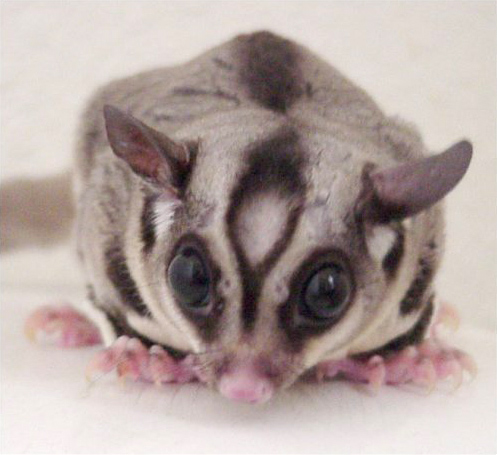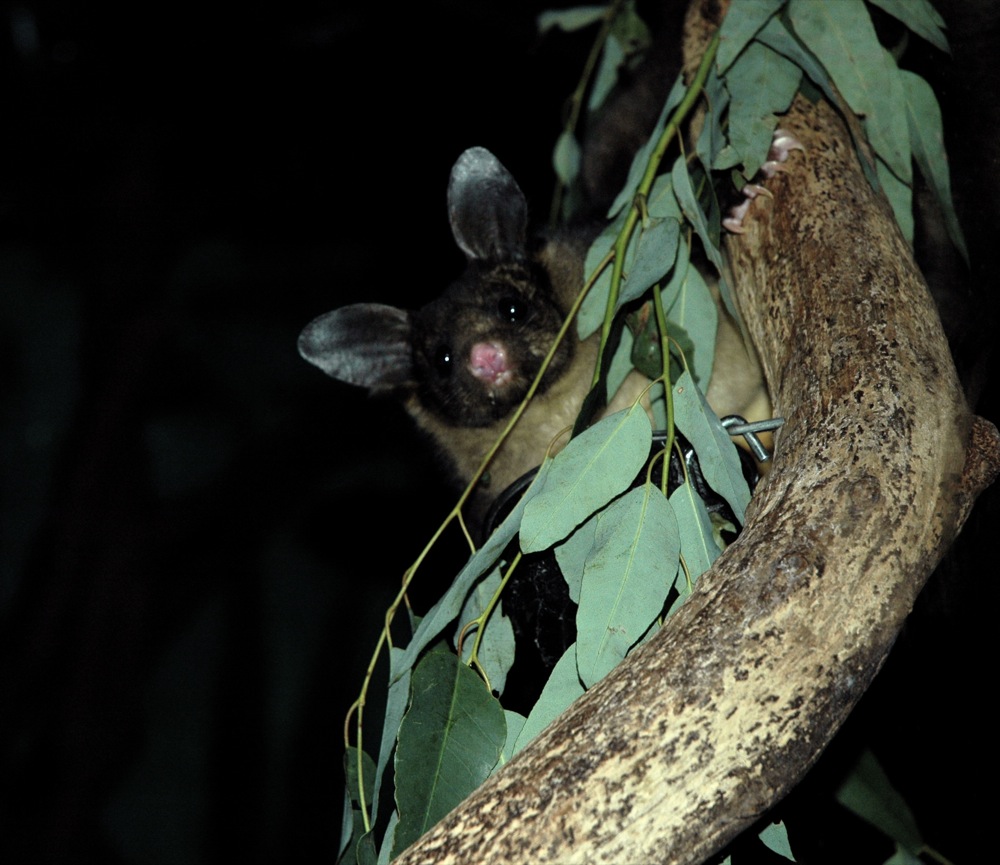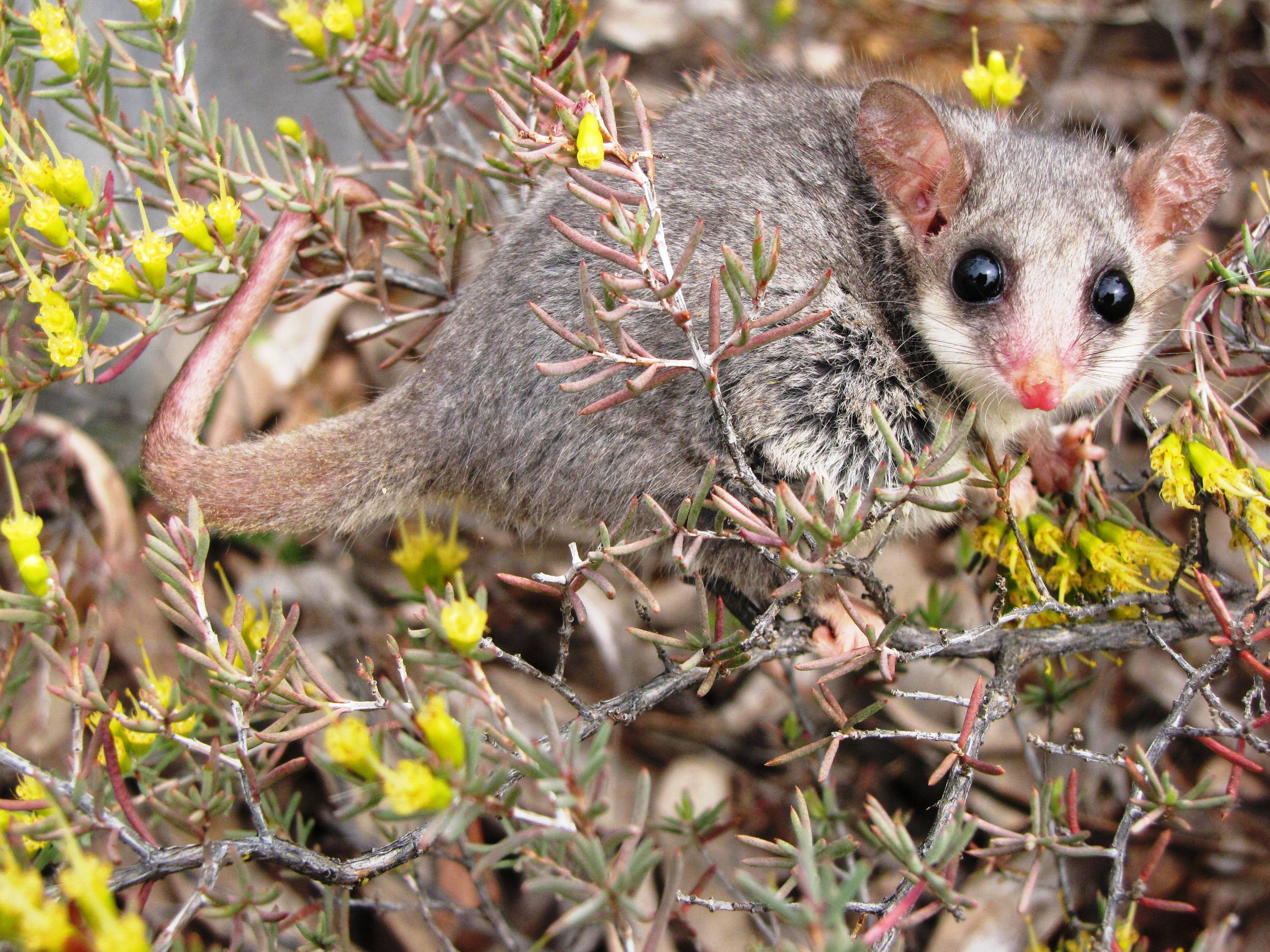|
Petauridae
Petauridae is a family of possums containing 13 species: four species of trioks and striped possum (genus ''Dactylopsila''), eight species of wrist-winged glider (genus ''Petaurus''), and Leadbeater's possum (''Gymnobelideus leadbeateri''), which has only vestigial gliding membranes. Most of the wrist-winged gliders are native to Australia, whereas most of the striped possums to New Guinea, but some members of each group are found on both sides of the Torres Strait. Leadbeater's possum is endemic to Victoria, Australia. Evolution All petaurids have obvious facial markings, a well-defined dorsal stripe, very large lower front incisors, and four-cusped molars. Despite their distinctive appearance, petaurids are closely related to the ringtail possums (family Pseudocheiridae) and are grouped together with them to form the superfamily Petauroidea. The wrist-winged gliders are omnivorous, specialising on sap and nectar, but taking a wide variety of supplemental foods. The gliders ... [...More Info...] [...Related Items...] OR: [Wikipedia] [Google] [Baidu] |
Sugar Glider
The sugar glider (''Petaurus breviceps'') is a small, omnivorous, arboreal, and nocturnal gliding possum belonging to the marsupial infraclass. The common name refers to its predilection for sugary foods such as sap and nectar and its ability to glide through the air, much like a flying squirrel. They have very similar habits and appearance to the flying squirrel, despite not being closely related—an example of convergent evolution. The scientific name, ''Petaurus breviceps'', translates from Latin as "short-headed rope-dancer", a reference to their canopy acrobatics. The sugar glider is characterised by its pair of gliding membranes, known as patagia, which extend from its forelegs to its hindlegs. Gliding serves as an efficient means of reaching food and evading predators. The animal is covered in soft, pale grey to light brown fur which is countershaded, being lighter in colour on its underside. The sugar glider is native to a small portion of southeastern ... [...More Info...] [...Related Items...] OR: [Wikipedia] [Google] [Baidu] |
Wrist-winged Glider
The genus ''Petaurus'' () contains flying phalangers or wrist-winged gliders, a group of arboreal possums native to Australia, New Guinea, and surrounding islands. There are eight species: the sugar glider, savanna glider, Krefft's glider, squirrel glider, mahogany glider, northern glider, yellow-bellied glider and Biak glider. Flying phalangers are typically nocturnal, most being small (sometimes around 400 mm, counting the tail), and have folds of loose skin (patagia) running from the wrists to the ankles. They use the patagia to glide from tree to tree by jumping and holding out their limbs spread-eagle. They are able to glide for distances over 140 metres. Beside the distinctive skin folds, flying phalangers also have large, forward-facing eyes, short (though pointed) faces, and long flat tails which are used as rudders while gliding. All are omnivores, and eat tree sap, gum, nectar, pollen, and insects, along with manna and honeydew. Most flying phalangers ap ... [...More Info...] [...Related Items...] OR: [Wikipedia] [Google] [Baidu] |
Northern Glider
The northern glider (''Petaurus abidi'') is a species of marsupial in the family Petauridae. It is endemic to Papua New Guinea, becoming known to science in 1981 after being discovered in the Torricelli Mountains. This species has been found in primary, mid-montane tropical moist forests. It is also known from rural gardens close to forest. The northern glider is Critically Endangered because its occurrence is less than 100 km2, all individuals are located within a single area, and a continuing decline of its habitat quality due to deforestation Deforestation or forest clearance is the removal of a forest or stand of trees from land that is then land conversion, converted to non-forest use. Deforestation can involve conversion of forest land to farms, ranches, or urban area, urban ... and human encroachment. They also face a major threat from hunting. Appearance The northern glider ranges in weight of 228–332 grams. Its silky-like fur is gray on the top half, p ... [...More Info...] [...Related Items...] OR: [Wikipedia] [Google] [Baidu] |
Petaurus
The genus ''Petaurus'' () contains flying phalangers or wrist-winged gliders, a group of arboreal possums native to Australia, New Guinea, and surrounding islands. There are eight species: the sugar glider, savanna glider, Krefft's glider, squirrel glider, mahogany glider, northern glider, yellow-bellied glider and Biak glider. Flying phalangers are typically nocturnal, most being small (sometimes around 400 mm, counting the tail), and have folds of loose skin (patagia) running from the wrists to the ankles. They use the patagia to glide from tree to tree by jumping and holding out their limbs spread-eagle. They are able to glide for distances over 140 metres. Beside the distinctive skin folds, flying phalangers also have large, forward-facing eyes, short (though pointed) faces, and long flat tails which are used as rudders while gliding. All are omnivores, and eat tree sap, gum, nectar, pollen, and insects, along with manna and honeydew. Most flying phalangers appe ... [...More Info...] [...Related Items...] OR: [Wikipedia] [Google] [Baidu] |
Striped Possum
The striped possum or common striped possum (''Dactylopsila trivirgata'') is a member of the marsupial family Petauridae. it is found mainly in New Guinea. The species is black with three white stripes running head to tail, and its head has white stripes that form a 'Y' shape. It is closely related to the sugar glider, and is similar in appearance. Taxonomy The striped possum was first described by John Edward Gray in 1858 from a specimen sent from the Aru Islands (in Indonesia) to the British Museum by Alfred Russel Wallace. Gray gave the species the name ''Dactylopsila trivirgata'' in 1858, the name the species retains today. The illustration that appeared alongside the first description was produced by Joseph Wolf. Range The striped possum is most commonly found in New Guinea as well as several other small islands in the area (including the Solomon Islands). It also lives in Queensland, Australia, in rainforests and eucalypt woodland along the east coast of Cape York Peni ... [...More Info...] [...Related Items...] OR: [Wikipedia] [Google] [Baidu] |
Tate's Triok
Tate's triok, also known as the Fergusson Island striped possum (''Dactylopsila tatei''), is a species of marsupial in the family Petauridae. It is endemic to Papua New Guinea. Its natural habitat is subtropical or tropical dry forests. Lifestyle Tate's triok are arboreal and are rarely found on the forest floor. The species tend to stay in their dry leaf nests in hollows of trees during the day. Tate's triok is also nocturnal and only come out at night to find food. The species are insectivores but can occasionally be found chewing on tree bark or eating fruits and leaves. Description Tate's triok is quite small, measuring from 12-31 inches long and weighing between 3-25 ounces. The species usually has black fur with two white stripes that run along its back, resembling a skunk. They also have a short tail with a white coloration at the tip. Key Features Tate's triok has many important features that better suit its lifestyle. One feature is that they have an elo ... [...More Info...] [...Related Items...] OR: [Wikipedia] [Google] [Baidu] |
Striped Possum
The striped possum or common striped possum (''Dactylopsila trivirgata'') is a member of the marsupial family Petauridae. it is found mainly in New Guinea. The species is black with three white stripes running head to tail, and its head has white stripes that form a 'Y' shape. It is closely related to the sugar glider, and is similar in appearance. Taxonomy The striped possum was first described by John Edward Gray in 1858 from a specimen sent from the Aru Islands (in Indonesia) to the British Museum by Alfred Russel Wallace. Gray gave the species the name ''Dactylopsila trivirgata'' in 1858, the name the species retains today. The illustration that appeared alongside the first description was produced by Joseph Wolf. Range The striped possum is most commonly found in New Guinea as well as several other small islands in the area (including the Solomon Islands). It also lives in Queensland, Australia, in rainforests and eucalypt woodland along the east coast of Cape York Peni ... [...More Info...] [...Related Items...] OR: [Wikipedia] [Google] [Baidu] |
Petauroidea
Petauroidea is a superfamily of marsupials from Australia and New Guinea. It is part of the suborder Phalangeriformes within the order Diprotodontia, which also includes, among others, wombats, kangaroos, cuscuses. The superfamily Phalangeroidea, including cuscuses and brushtail possums (family Phalangeridae) and pygmy possums (family Burramyidae), is the immediate sister group of the Petauroidea. The superfamily includes the following recent species: *Superfamily Petauroidea ** Family Pseudocheiridae *** Subfamily Hemibelideinae **** Genus '' Hemibelideus'' ***** Lemur-like ringtail possum, ''Hemibelideus lemuroides'' **** Genus '' Petauroides'' ***** Central greater glider, ''Petauroides armillatus'' ***** Northern greater glider, ''Petauroides minor'' ***** Southern greater glider, ''Petauroides volans'' *** Subfamily Pseudocheirinae **** Genus '' Petropseudes'' ***** Rock-haunting ringtail possum, ''Petropseudes dahli'' **** Genus ''Pseudocheirus'' ***** Common rin ... [...More Info...] [...Related Items...] OR: [Wikipedia] [Google] [Baidu] |
Yellow-bellied Glider
The yellow-bellied glider (''Petaurus australis''), also known as the fluffy glider, is an arboreal and nocturnal gliding possum that lives in native eucalypt forests in eastern Australia, from northern Queensland south to Victoria. Habitat The yellow-bellied glider inhabits forests and woodlands in eastern Australia and is found at a range of altitudes from sea level to 1400 metres. In North Queensland, the sub-species occurs at altitudes over 700 m above sea level. With natural discontinuities and habitat clearings, there are 13 different populations in three distinct places to find this glider in North Queensland. One population resides on Mount Windsor Tableland, another on Mount Carbine Tableland, and the third lives in a linear habitat going from Atherton to Kirrama on the Atherton Tableland. These three populations together are estimated to contain around 6000 individual gliders. With their habitat in danger, the yellow-bellied glider is classified as uncommon to rar ... [...More Info...] [...Related Items...] OR: [Wikipedia] [Google] [Baidu] |
Phalangeriformes
Phalangeriformes is a paraphyletic suborder of about 70 species of small to medium-sized arboreal marsupials native to Australia, New Guinea, and Sulawesi. The species are commonly known as possums, gliders, and cuscus. The common name "possum" for various Phalangeriformes species derives from the creatures' resemblance to the opossums of the Americas (the term comes from Powhatan language ''aposoum'' "white animal", from Proto-Algonquian *''wa·p-aʔɬemwa'' "white dog"). However, although opossums are also marsupials, Australasian possums are more closely related to other Australasian marsupials such as kangaroos. Phalangeriformes are quadrupedal diprotodont marsupials with long tails. The smallest species, indeed the smallest diprotodont marsupial, is the Tasmanian pygmy possum, with an adult head-body length of and a weight of . The largest are the two species of bear cuscus, which may exceed . Phalangeriformes species are typically nocturnal and at least partia ... [...More Info...] [...Related Items...] OR: [Wikipedia] [Google] [Baidu] |
Dactylopsila
''Dactylopsila'' is a genus of marsupial in the family Petauridae. Species The genus includes the following four species: * Great-tailed triok, ''Dactylopsila megalura'' * Long-fingered triok, ''Dactylopsila palpator'' * Tate's triok, ''Dactylopsila tatei'' * Striped possum The striped possum or common striped possum (''Dactylopsila trivirgata'') is a member of the marsupial family Petauridae. it is found mainly in New Guinea. The species is black with three white stripes running head to tail, and its head has whit ..., ''Dactylopsila trivirgata'' References External links * * Possums Marsupial genera Taxa named by John Edward Gray Taxonomy articles created by Polbot {{Diprotodont-stub ... [...More Info...] [...Related Items...] OR: [Wikipedia] [Google] [Baidu] |
Leadbeater's Possum
Leadbeater's possum (''Gymnobelideus leadbeateri'') is a critically endangered possum largely restricted to small pockets of alpine ash, mountain ash, and snow gum forests in the Central Highlands of Victoria, Australia, north-east of Melbourne. It is primitive, relict, and non-gliding, and, as the only species in the petaurid genus ''Gymnobelideus'', represents an ancestral form. Formerly, Leadbeater's possums were moderately common within the very small areas they inhabited; their requirement for year-round food supplies and tree-holes to take refuge in during the day restricts them to mixed-age wet sclerophyll forest with a dense mid-story of ''Acacia''. The species was named in 1867 after John Leadbeater, the then taxidermist at the Museum Victoria. They also go by the common name of fairy possum. On 2 March 1971, the State of Victoria made the Leadbeater's possum its faunal emblem. History Leadbeater's possum is thought to have evolved about 20 million years ago. I ... [...More Info...] [...Related Items...] OR: [Wikipedia] [Google] [Baidu] |

.jpg)

